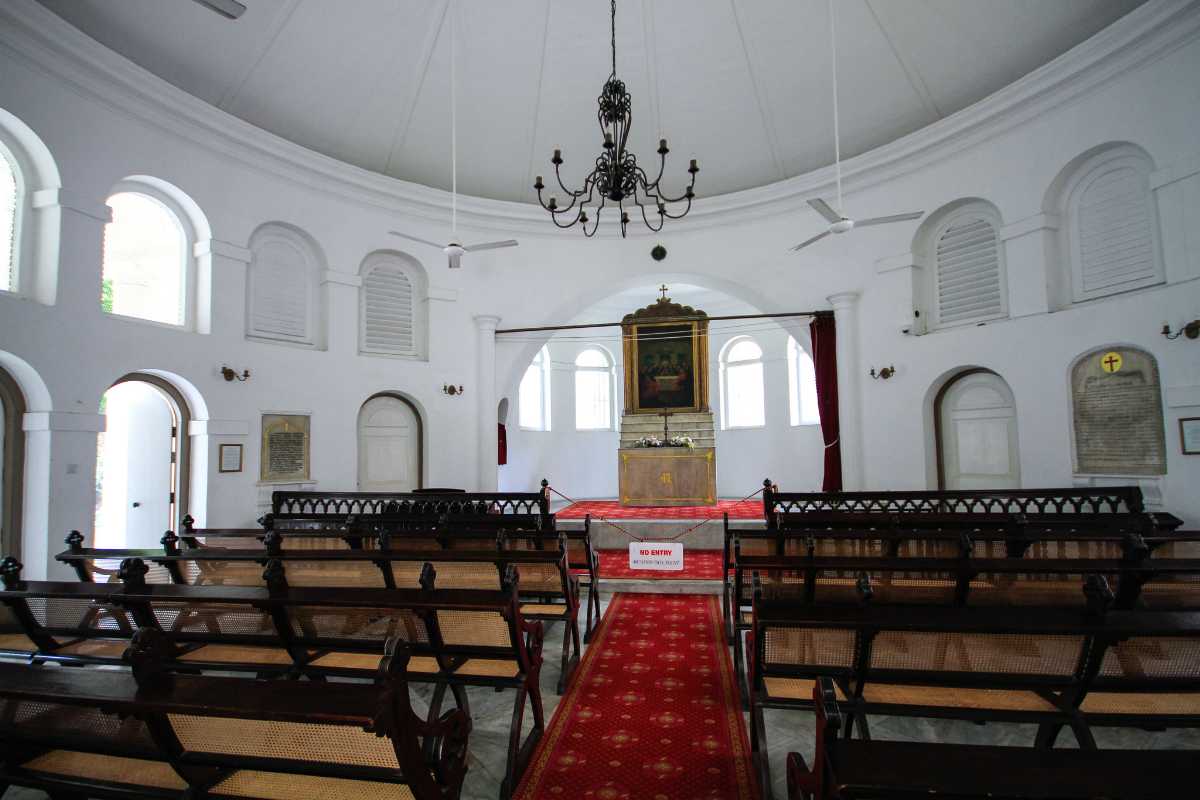Singapore Armenian Church
Tags : Church & Cathedral
Timings : 9:00 AM - 6:00 PM
Time Required : 1-2 hours
Entry Fee : No entry fee
Armenian Church, Singapore Overview
The Armenian Church of Saint Gregory the Illuminator is the oldest Church in Singapore, locally referred to as the Armenian Church. It is located in a quiet place in the Hill Street vicinity and is one of the masterpieces of the Irish architect, George D Coleman. The Armenian community of Singapore regard this place as their spiritual abode, and the church now serves as a beautiful venue for couples to tie their knot in holy matrimony. The grand edifice is built in a British-neoclassical inspired architecture. This tranquil church is always a good option for an evening stroll.
Consecrated in1836, the Armenian Church of Singapore originally was in the Jurisdiction division of the Armenian Apostolic Church. It was later designated as a national monument in 1973. Now, the church serves as a peaceful tourist attraction and regularly holds Armenian and Oriental Orthodox services, mainly for the Armenian community. The Armenians were the first to adopt Christianity on a national level, and hence, sent missionaries and a few families as traders to different parts of the globe to spread Christianity. The Armenian Church in Singapore is a result of that.
Read More on Armenian Church
Armenian Church Mass Timings
The English mass is held every Sunday at 9:30 AM.
At 11:00 AM, a high mass in Armenian is scheduled.
Every second Sunday of the month has a mass in Arabic and English at 1:00 PM.
At 2:00 PM, a Glendora Mass is conducted.
Architecture of Armenian Church Singapore
Drumgoole Coleman built the Armenian Church in Singapore with a few eclectic influences from the British neoclassical style, centrally designed in a manner of Etchmiadzin Cathedral-the mother church of Armenia. Coleman has carefully constructed the church, considering the tropical climate of Singapore. Preference has been given to wide verandas having shade and protection of timbre-louvred windows on the ground floor from the rain. The windows help in diffusing sunlight and inducing cross ventilation. The north, south and west fronts have Tuscan Doric Porticos topped with a triangular pediment, designed to allow horse carriages to pull into porches, so ladies could directly step into the church without soiling their dresses.
Interior
The circular interior of the Armenian Church is believed to be built in resemblance to the Holy Sepulchre in Cambridge. The circle further has square porticos extending from its centre in Roman Doric orders - one of James Gibb's designs inspires the Palladian style of architecture. Coleman's original plan was an octagonal cone supporting a tiny bell with prominent columns. The original bell turret of Coleman was later replaced by a spire, fixed on an octagonal tower, by an English architect named George Maddock. Maddock also had the old roof replaced by his own designs.

Memorial Garden
The Memorial Garden pays tribute to prominent members of the Armenian community in Singapore. The tranquil location is a fitting memorial to the contribution of Singapore’s finest, and hosts the tombstones of famous Armenians from the former Bukit Timah Cemetery, including Agnes Joaquim – who bred Singapore’s national flower that now bears her name, Catchick Moses – the founder of the Straits Times, and members of the Sarkies family of Raffles Hotels.

Armenian Church Heritage Gallery
A part of the Singapore Government’s Heritage Trail, the Armenian Church Heritage Gallery has a museum, gallery, and gift shop featuring photos, artefacts, and books documenting the life of the Armenian community. This two-storey building was built by members of the Sarkies family and was converted into a Heritage Gallery after renovations. The Armenian Heritage Gallery is a part of the Singapore Government's Heritage Trail.
The Gallery accepts visitors only by appointment. Contact the Gallery authorities to book a private tour.

History
How To Reach Singapore Armenian Church
Hiring a taxi is also a convenient option.
